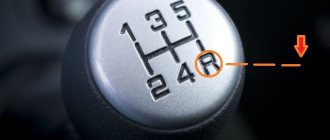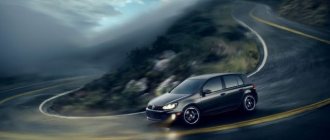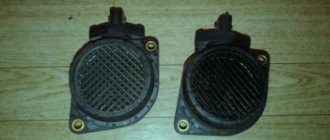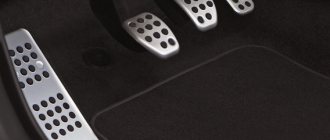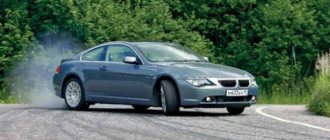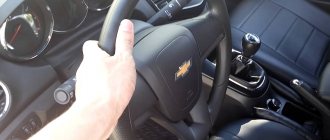Hi all! Many people want to get behind the wheel of a car and enjoy the benefits of a personal car. But before you do this, you have to go through a difficult learning curve. Practice clearly shows that the main problems arise with how to change gears correctly and with mechanics.
Initially, the most difficult thing for a beginner seems to be simply learning how to get going. But in just a few practical sessions this point can be mastered until it becomes automatic.
But switching to a manual transmission while driving is more difficult. This is a gradual process of developing a reflex that allows you to move from one speed to another in a timely manner and without being distracted by the lever itself, almost at the level of intuition.
The key rule is to always use the clutch pedal. In theory, you can learn to shift without a clutch, but then the box won’t last long and will have to be replaced soon. Therefore, when braking and accelerating, the clutch pedal and gearshift lever must work in tandem.
Shifts when overtaking
It is not recommended to overtake in the current gear
During normal highway driving, the optimal speed is achieved by gradually changing gears. It is not necessary to reach fifth gear; many drivers are satisfied with driving in lower gears. The appearance of limiting signs, obstacles, and slow passing traffic forces you to slow down by braking and gradually engaging lower gears.
Correct actions when overtaking: having caught up with a passing car, slow down, equalize speed, and get into the right gear. When sufficient clearance appears, you need to switch to the most dynamic gear (usually third) and quickly overtake.
A common mistake made by beginners is overtaking in the current gear (only possible when the oncoming lane is clear); if an oncoming car suddenly appears, it does not allow freedom of maneuver. It is also dangerous to switch directly while overtaking - this is only available to experienced drivers who switch instantly.
Starting the engine at low temperatures
In winter, a car (especially if it has hundreds of kilometers behind it) freezes, just like people, so it is more difficult to start the engine. To help it “warm up,” it is recommended to close the engine shutter and not start the starter for more than 10 seconds, taking a break of at least a couple of minutes between attempts. During this time, the battery will have time to return to normal.
If after 3-4 attempts you cannot start the engine, you need to figure out the reason.
If the engine starts, you need to wait a while, monitoring its operation, i.e. the desired crankshaft speed. Otherwise, the car may stall again.
This is done using the gas pedal and throttle. The engine can stall if the throttle is too open or not enough, so the driver’s task is to learn how to correct it by listening to the engine.
Three true friends
Now is the time to get acquainted with manual pedals. On the left is the clutch, in the middle is the brake, and on the right is the gas. I will say that this arrangement is the same for both right-hand drive and left-hand drive cars. Therefore, you will have to remember it once, even if you subsequently need to change to another car with a manual transmission.
In a manual car, the clutch is responsible for:
- smooth starting;
- disconnecting the engine from the gearbox;
- gear shift.
Make sure you fully depress the clutch. To do this, simply press on it with your left foot. You can only change gears when the clutch is fully depressed.
How did I do it? At first I pressed the pedals one at a time, then randomly, trying to remember and get used to their location. I pressed the gas and brake with my right foot alternately. At the very beginning, the main thing is to remember the correct location and not get confused.
Working with pedals
How to use the clutch pedal on a manual transmission? Try pressing the clutch to the floor and shifting the gearshift lever to one of the speed positions. Once you have engaged the gear, slowly release the pedal. No sudden jerks or sudden movements. I did this several times in a row until I remembered how I felt.
First of all, make sure that your car's brakes are working properly. Training on faulty brakes is a waste of time and will not yield any results. And learning to drive such a car is quite risky.
It is very important to remember and feel what the pedal should be, its hardness, in order to notice a malfunction in time. If she:
- Too soft and with a little pressure it suddenly sinks into the floor.
- Too hard when it takes a lot of force to apply the brake.
This indicates a malfunction. If you experience similar sensations when pressing, then this is a serious reason to contact a car service center. The brake pedal in a manual car is located in the center. To activate it, press it with your right foot. To brake, you must press the brake and clutch at the same time when you turn on the speed. From my own experience, I will say that the clutch must be pressed a certain fraction of a second faster than the brake.
The gas pedal is located on the right. By pressing or releasing it with your right foot, you give a command to the car's fuel system to increase or decrease the supply of the fuel mixture. As a result of such actions, your car will gain or lose speed. The harder you press the gas, the higher the speed will be. The video above describes everything in detail once again – it’s worth watching.
The location of the pedals on the “mechanics” can be seen in the photo above. So you will understand what's what. I am sure that after just a few lessons you will be able to easily drive your car.
Toe Forever!
By the way, re-throttle (in English: toe) came to us from the good old fifties, from trucks that did not have synchronizers and the gear could not be engaged in principle without re-gearing. Therefore, today there is sometimes a point of view that, they say, shifting the throttle is an anachronism, hello from the past, and that any modern car copes perfectly with downshifting without shifting the throttle. If you think so, then let’s return to the second paragraph of this article and once again engage a lower gear without revving up the throttle. And for greater clarity, let’s switch to 50 km/h not in second gear, but immediately in first gear. Just choose a quieter and wider place on the road, otherwise you’ll fly off the road, it won’t seem too much...
I’ll also add that re-throttle is an integral part of any professional racer’s arsenal of techniques. So if you are planning to take up sports driving, changing the throttle is a must for you! Try it, go for it!
And if you need practice, come to the courses “The Magic of Gear Shifting” or “Driving on a Race Track”. For novice drivers, the “Driving in the City” course is more suitable, and for advanced drivers, I can also advise taking an exclusive course from our school: “MBA Course for Drivers: Mastery of Driving a Car.”
Even if you are not going to achieve the heights of racing driving, in any case, changing the throttle is an element of driving skill and the calling card of a competent driver. I recommend!
That's all with shifting and downshifting, and in the next article I will finally tell you how to brake correctly with a manual transmission.
How to drive uphill with a manual transmission
Often, a novice driver's problems are caused by the process of starting to move on an uphill slope. Of course, a person does not have a convenient third leg to simultaneously operate the clutch, brake and gas. But even without this, with constant training, you will eventually learn how to start off up a hill or from a traffic light. It's not that difficult.
At first, use the handbrake starting method. To do this while standing on the rise, do the following:
- Put the car on the handbrake and depress the clutch.
- Shift into first gear.
- Start pressing the gas pedal and, as soon as the tachometer shows 1500 rpm, fix your foot in this position.
- Next, you need to release the clutch pedal until you feel that the clutch discs are in contact; you can determine this moment by the sound or vibration of the engine.
- After this, remove the car from the handbrake.
- Once the car starts moving, as the speed increases, carefully continue to increase your foot pressure on the gas pedal while releasing the clutch. This way the car will go up the hill.
Be sure to watch a useful video on how to start up a hill using the handbrake:
At the same time, it is worth mastering another method: fixing the clutch. Its essence is as follows:
- With the clutch depressed, engage first gear and press the brake.
- Release the clutch pedal and watch the tachometer needle - the engine speed should drop slightly. When the speed is turned on, it counteracts the brake, causing the car to shake.
- As soon as you feel this vibration, you need to fix the position of your feet on the clutch and brake until you can start moving.
- When you release the brake, the car will likely move forward slowly or become stuck in its current position. In any case, if done correctly, the car will not roll back.
- While pressing the gas pedal, continue to release the clutch pedal until you completely remove your foot from the clutch.
We watch the video, we start up the hill using the brake pedal:
All these steps, supported by regular practice, will allow you to fully master the manual transmission and enjoy complete control over your car.
New articles
- How can a woman learn to drive a manual car from scratch?
- Learning to change gears correctly, avoiding mistakes while driving
Previous articles
- Driving on a race track: useful tips and tricks for novice drivers
- How to learn to drive a car with a manual transmission?
Learning pedals
The far left one seems like a pedal - it’s not a pedal at all, it’s the place where you can put your foot while moving. The clutch pedal is the second from the left. Next comes the brake pedal and the far right is the gas pedal.
How to get started correctly
For many, mechanics are associated with fear at the very beginning of the journey, especially when you need to leave a small area. How to move away at a traffic light, in a traffic jam and in other busy places, so as not to stall the engine? The main thing in this case is smoothness and regularity throughout the entire journey. Drive away without jerking, because this disrupts the operation of the entire system as a whole. Knowing how to get going correctly, you can use the mechanics to their full potential.
We depress the clutch so that it is as close to the floor as possible, and put the lever in the first speed position. We begin to smoothly release the clutch and slowly press the gas. These actions must be as synchronous as possible, otherwise the gear shift mechanism will jam the system and the car will not be able to move off. A car with a manual transmission begins to move slowly in the indicated direction, which means you were able to move off in a car with a manual transmission. Remember that the rules say never leave the clutch pedal, but gradually release the pressure.
Secrets of saving fuel consumption
There are several features that can help reduce fuel consumption and engine load:
- When accelerating, you should change gears faster. Shift moments are individual for each car, but the transition from first to second gear is optimally done at a speed of 25 km per hour. You can move to the next steps when you reach 55-60 km per hour;
- when the engine is running extremely hard, it is worth shifting to a higher gear if the car does not need such power to maintain speed;
- switching to a lower gear is necessary if the car slows down without pressing the gas pedal. You should avoid driving slowly in high gears, as this greatly increases fuel consumption.
Many novice drivers are afraid to drive a car with a manual transmission. But if you master and understand the principle of control, then any car with an automatic transmission will be easy for you to drive. Each driver chooses for himself which gearbox to drive. But having mastered the mechanics, you will gain an unforgettable experience and driving skill that can help you when a difficult situation arises. You can view a manual driving lesson here
Share on social networks:
More useful on the topic
How to sign up at the traffic police to take exams to obtain a driver's license
21.02.2022
What you need to get your driver's license in 2022
10.02.2022
Correct shifting while driving
There are often situations when inexperienced drivers begin to shift without reaching the required speed. Ultimately, this destroys not only the transmission, but also the car’s engine. When driving on highways or highways, shifting should occur smoothly, and gears should be changed as the vehicle speed increases.
Your goal should not be to reach the highest gear at a low vehicle speed, nor, conversely, to constantly drive at high engine speeds. You should select only the desired gear that corresponds to the current vehicle speed. Since each gear has its own optimal speed mode, at which the engine operates most efficiently and economically.
Let's watch a useful video on how to change gears using the speedometer or tachometer while driving:
My car stalled. What to do?
First of all, you need to calm down. There's nothing wrong with your car and you haven't broken anything. Simply press the clutch pedal again and turn the ignition key. Your car will start again. Just make sure for yourself first that the shift lever is in neutral and perform the same steps again.
See also: Double Clutch Shift Pattern, Why Use It, How It Works and How to Apply It in Everyday Situation?
Why did the car stall? You put the lever into first gear but did not give enough gas to move the car. The car wanted to go, but it didn’t have enough gas and it stalled.
Overtaking on mechanics
When mastering the gearbox, keep in mind that low gears are the most powerful, but they also have a low speed limit. How to overtake a slowly moving car in a populated area or on a highway outside the city, moving at the same speed as it?
There is also a commandment here: when overtaking, reduce the gear. The current gear will not always allow you to quickly gain the necessary acceleration to complete the maneuver, so you should slow down the engine speed, lower the gear and only after that, making sure there are no obstacles, fully press the pedal to the floor. Having reached the extreme tachometer readings, switch again.
When is it necessary to change gears in a car?
Over time, drivers get used to it and intuitively feel when to upshift or downshift. But novice motorists can use the following approximate figures:
- — 0–25 km/h;
- — 20–40 km/h;
- — 40–60 km/h;
- — 60-90 km/h;
- - over 90 km/h.
Often, first gear is used to get the car moving; the second is for overclocking. The third speed is suitable for driving around the city and other populated areas. The fourth is used for overtaking. It is recommended to switch to fifth on expressways, highways, and autobahns.
But remember that these are approximate parameters and when driving you need to take into account the technical characteristics of the car, road conditions, terrain, etc. The main criterion for changing from gear to gear is the smoothness of the car.
